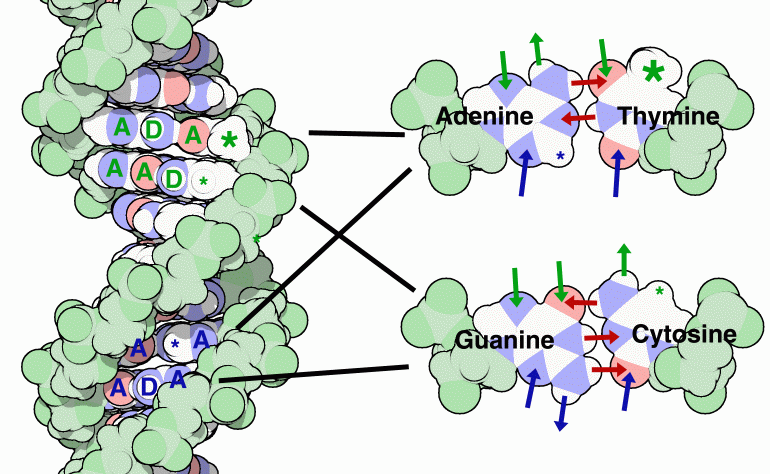|
Inhaltsübersicht | Nanomaschinen | Moleküle | Programme | Kurse | Fun | Links |
||
| > |
DNA

Molecular Information
DNA is perfect for the storage and readout of information. It is laden with information. Every surface and edge of the molecule carries information. The basic mechanism by which DNA stores and transmits genetic information was discovered in the 1950's by Watson and Crick. This basic information is stored in the way that the bases match one another on opposite sides of the double helix--adenine with thymine, guanine with cytosine--forming a set of complementary hydrogen bonds. These are shown in the diagram with red arrows.Additional 'extragenetic' information is read from the surfaces that are left exposed in the double helix. In the major groove (the wider of the two grooves in the structure on the left), the different base pairs have a characteristic pattern of chemical groups that carry information, shown by green arrows in the close-up diagrams on the right. These include hydrogen bond donors (D) and acceptors (A) as well as a site with a large, bulky group in adenine-thymine base pairs (large asterisk) or a small group in guanine-cytosine base pairs (small asterisk). In the minor groove, there is a different arrangement of chemical groups that carry additional information, indicated with blue arrows in the diagram on the right and the blue letters in the structure on the left. As revealed in hundreds of structures in the PDB, this extragenetic information is used by proteins to read the genetic code in DNA without unwinding the double helix. It is also targeted by a number of toxins and drugs that attack DNA.
Next: Variations on a Theme
Previous: DNA
Last changed by: A.Honegger,